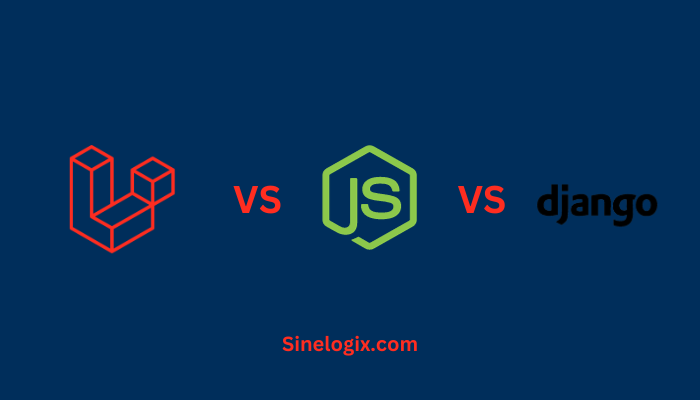Laravel, one of the most popular PHP frameworks, has gained immense popularity in recent years due to its elegant syntax and powerful features.
Whether you’re a developer or a business owner, working with Laravel can be a rewarding experience. In this article, we will delve into a step-by-step guide on how to install an existing Laravel project.
This process can seem daunting for newcomers, but with over a decade of experience as a SaaS content writer, I’m here to simplify the process for you.
Prerequisites
Before you can start installing an existing Laravel project, there are a few prerequisites you need to ensure are in place:
- Web Server: You should have a web server (e.g., Apache, Nginx) installed and running.
- PHP: Make sure you have PHP installed on your system. Laravel typically requires PHP 7.4 or higher.
- Database: You should have a database system installed, such as MySQL or PostgreSQL.
- Composer: Laravel heavily relies on Composer, a PHP dependency manager. If you don’t have it, download and install it.
- Git: Ensure Git is installed on your machine, as we will often need it to manage project versions.
- Laravel Project Files: Have the Laravel project files ready, which you can obtain from a version control system or a zip archive.
Preparing Your Environment
To install an existing Laravel project, it’s essential to set up your development environment correctly. This includes configuring your web server, PHP, and database. Laravel’s official documentation provides excellent guidance on this.
Downloading the Project
You can obtain the Laravel project files in two primary ways:
Option 1: Clone from a Version Control System
- If your project is hosted on platforms like GitHub or GitLab, you can clone the repository using Git. Navigate to the desired directory and execute the following command:
git clone <repository-url> project-name
Option 2: Use a Zip Archive
- If you have a zip archive of the project, simply extract it into the desired directory.
Setting Up the .env File
The .env file is a crucial configuration file for Laravel projects. It contains environment-specific settings, such as database credentials and application keys. You typically receive a .env.example file with the project. Create a copy of this file as .env and modify its contents according to your environment.
Here’s a sample of what your .env file might look like:
APP_NAME=YourAppName
APP_ENV=local
APP_KEY=base64:YourUniqueKey
APP_DEBUG=true
APP_URL=http://localhostDB_HOST=127.0.0.1
DB_PORT=3306
DB_DATABASE=your_database_name
DB_USERNAME=your_database_username
DB_PASSWORD=your_database_password
Installing Composer Dependencies
Laravel heavily relies on Composer for managing its dependencies. Once you have your .env file set up, navigate to your project’s root directory, and run the following command to install all the required packages:
composer install
This will download and install all the necessary packages defined in your composer.json file.
Running Migrations and Seeders
Migrations are a way to version-control your database schema, and seeders allow you to populate your database with initial data. Run the following commands to execute migrations and seeders:
php artisan migrate
php artisan db:seed
Configuring the Web Server
Now that your Laravel project is set up, you need to configure your web server to serve it. The configuration steps may vary depending on your server (Apache or Nginx). However, for both servers, you’ll need to point your server’s root directory to the public folder within your Laravel project.
For Apache, you can create a virtual host configuration, and for Nginx, you can create a server block. Below are simplified examples for both servers.
Apache Virtual Host Configuration
<VirtualHost *:80>
DocumentRoot /path/to/your/laravel-project/public
ServerName yourdomain.com
</VirtualHost>
Nginx Server Block
server {
listen 80;
server_name yourdomain.com;
root /path/to/your/laravel-project/public;
index index.php;try_files $uri $uri/ /index.php?$query_string;
}
}
After making the necessary server configuration changes, don’t forget to restart your web server to apply the changes.
Testing the Installation
Once everything is set up, open your web browser and navigate to the URL you’ve configured. If all goes well, you should see your Laravel application up and running. Congratulations, you’ve successfully installed an existing Laravel project!
Related Articles:
- How to Install Laravel in the Current Directory?
- How To Install Laravel In Laragon?
- How to Install a Laravel Project from GitHub?
Conclusion
Installing an existing Laravel project may seem intimidating at first, but with the right guidance and experience, it becomes a manageable process. In this comprehensive guide, we’ve covered the necessary steps to get your Laravel project up and running, from configuring your environment to setting up the web server.
Remember, every project may have specific requirements or configurations, so always refer to the project’s documentation or the Laravel official documentation for any project-specific instructions. With this guide and a bit of patience, you can dive into Laravel development confidently and start building amazing web applications. Happy coding!




